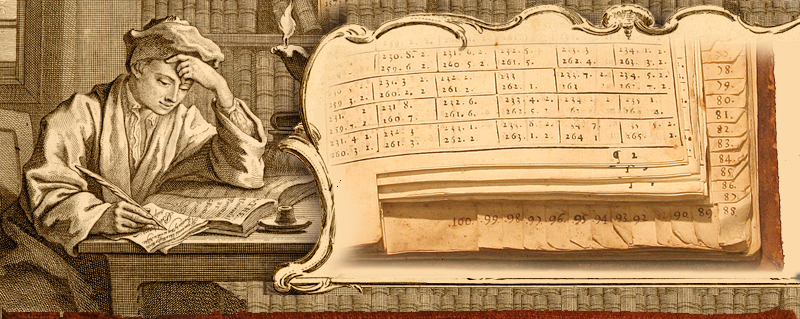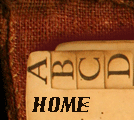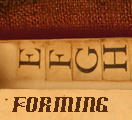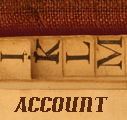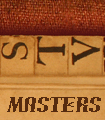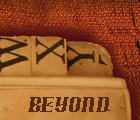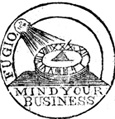Beyond business archives: conquistadors and ecclesiastical accounting
In this case, Ken Ward, Curator of Latin American Books has selected manuscripts that present examples of financial record keeping in the Spanish colonies—from the division of Atahualpa’s ransom by Pizarro’s conquistadors to the management of ecclesiastical accounts in Mexico. Also interesting is an 18th century manuscript guide for merchants that covers the same topics—keeping account books, settling letters of credit, converting currencies—discussed in the English-language textbooks used to train the clerks and merchants who built the New England businesses featured in this exhibition. |
|||||
|
|||||
Sancho, Pedro. Repartición que hizo el Marques Don Fr[ancis]co Pizarro en Caxamarca, del Tesoro q[u]e se tomo el año de 1533 años al cazique Atabalipa [sic]. Lima, 22 October 1557. Following the Battle of Cajamarca, Francisco Pizarro held the last Inca emperor, Atahualpa, as a hostage. Seeing the conquistadors’ lust for precious metals, as ransom, Atahualpa offered to fill a room with gold, and another twice over with silver. Pizarro never intended to free Atahualpa, and after several months held a mock trial after which Atahualpa was executed. This manuscript is the earliest surviving accounting of the division of the spoils of Atahualpa’s ransom among Pizarro’s men. |
|||||
Planta de las Pensiones y Cargas Anuales que tienen las Reales Cajas de Nueba España. Mexico, 31 December 1697. In both Mexico and Peru, descendants of the conquistadors and the indigenous nobility were granted royal pensions. In this manuscript giving the annual accounts of Mexico’s Royal Mint, appear entries for payments to descendants of Cortés, Moctezuma, and conquistadors. |
|||||
Régimen, operaciones y Economía de la Real Casa de Moneda de México. Mexico, 1776. Although in the seventeenth century accounts were kept sequentially, as illustrated in the previous manuscript, by the eighteenth century double-entry accounting had been adopted, as illustrated here by another manuscript from the Royal Mint of Mexico. |
|||||
Garreguilla, Francisco Juan. Libro de plata reduzida que trata de leyes baias desde 20. marcos, hasta 120. : Con sus abezedarios al margen. Con vna tabla general a la postre. Lima: Francisco del Canto, 1607. This handbook for silver traders served as a ready reference for determining the price of silver by weight and fineness. The silver mountain of Potosí in present-day Bolivia came to represent immense wealth, engendering the phrase “vale un Potosí,” or “it is worth a mountain of silver.” |
|||||
|
Declaracion de el Quadrante, divicion y partycyon de las rentas ecleciasticas y diezmos de las santas yglecyas de las Yndyas. [Mexico?, ca. 1700?]. An introduction to the intricacies of ecclesiastical accounting, with reference to the old system in the cathedral of Mexico. It explains the essential concept of the “Quadrante,” the division of the tithe revenue into quarters, the Bishop receiving one, the Dean and Chapter another, and the other two being combined then divided into nine to provide for the Spanish Crown, construction, the hospital, and clerical stipends. |
||||
Sarmiento Fuentes, Francisco de Paula. Ynstrucciones para el Bufet. Y Mercancia arregladas á los Comercios de Europa. [Mexico, 1781]. This manuscript guide, dedicated to the Merchant’s guild of Mexico City, the Consulado, contains advice and guidelines for keeping a letterbook, a receipt book, running accounts, general accounts, and a daybook, along with rules for trans-Atlantic trade with Spain and various European nations. It concludes with sections outlining the principle goods of various nations and cities along with how to calculate currency exchanges and settle letters of credit. |
|||||
Exhibition may be seen in Reading Room from September 12 through Exhibition prepared by Kim Nusco, Reference and Manuscript Librarian, John Carter Brown Library |

